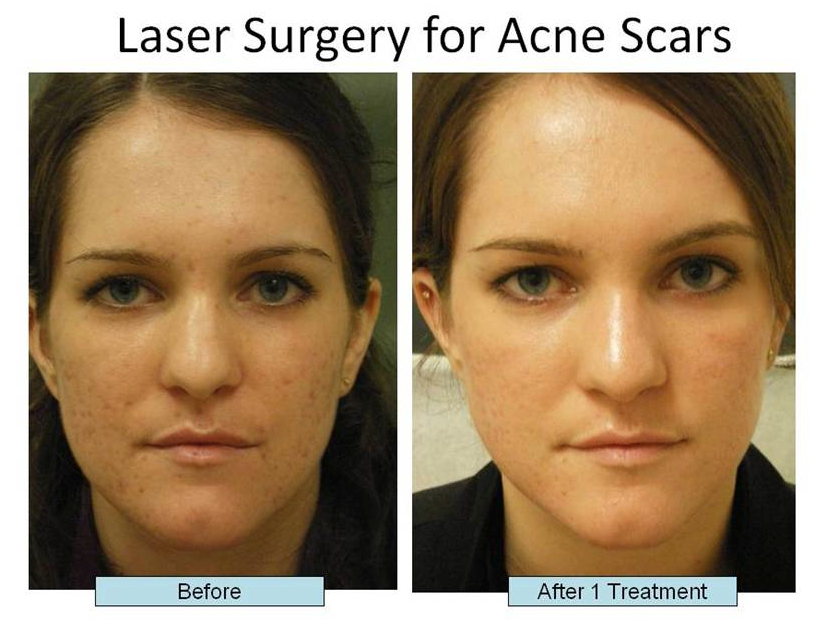Checking Out Skin Disease: Treating and recognizing Acne Scars for Healthier Skin
Acne marks stand for a significant concern for individuals seeking to maintain healthy and balanced skin, as they can impact both look and self-esteem. Recognizing the different types of scars, from atrophic to hypertrophic, is vital for identifying appropriate therapy options.
Comprehending Acne Scars

The body's natural recovery process can cause either atrophic scars, which look like clinical depressions in the skin, or hypertrophic marks, which are elevated and arise from overflow of collagen. In addition, the psychological toll of acne marks need to not be taken too lightly; lots of individuals report sensations of humiliation, anxiety, and decreased self-worth. This emotional problem can affect social interactions and general lifestyle.
Resolving acne scars calls for an extensive understanding of their development and effect. Understanding of the possibility for long-lasting effects associated with without treatment marks can inspire people to seek proper treatments. Early intervention and reliable management strategies can substantially improve skin appearance and enhance emotional durability, stressing the relevance of understanding the complexities surrounding acne scars.
Sorts Of Acne Scars
Acne marks can be classified into distinct types, each exhibiting special characteristics and requiring specific treatment methods. skin rejuvenation treatments. The primary kinds of acne marks include atrophic, hypertrophic, and keloid marks

Hypertrophic scars, in comparison, are elevated over the skin level and are the outcome of excessive collagen production during the healing procedure. They usually remain within the borders of the initial acne lesion. Keloid scars are similar but extend beyond the original injury website, developing larger, increased locations that can be unpleasant or itchy.
Understanding these types of marks is important for picking ideal therapy alternatives. Various scars may respond much better to certain treatments, such as laser treatments, fillers, or surgical interventions, highlighting the value of a customized technique to acne scar management.
Recognizing Your Marks
When assessing the look of your skin, it is critical to properly recognize the kind of marks existing, as this will educate one of the most reliable therapy method. Acne scars usually fall under 2 classifications: hypertrophic and atrophic marks. Atrophic scars, which are the most typical, appear as depressions or imprints on the skin. These can additionally be categorized right into ice-pick scars, boxcar scars, and rolling scars, each displaying unique qualities and requiring various methods for assessment.
Hypertrophic marks, on the other hand, are elevated and take place because of extreme collagen production during the healing procedure. Recognizing the details functions of click to read more your scars-- such as depth, texture, and width-- is important for proper identification (acne scars click here for more treatment). In addition, consider the distribution of scars across your skin, as this can show the intensity and period of the acne problem
Engaging with a dermatologist can offer useful understandings into the nature of your marks, aiding in the differentiation in between various kinds. A comprehensive understanding of your marks will inevitably cause an extra tailored and reliable treatment plan, making sure a clearer and healthier complexion.
Therapy Options Readily Available
Determining the certain sort of acne marks existing on your skin lays the groundwork for exploring efficient treatment options. Common kinds of acne scars consist of atrophic (clinically depressed), hypertrophic (raised), and post-inflammatory erythema.
For atrophic marks, alternatives such as chemical peels, microneedling, and laser resurfacing are extensively utilized. Chemical peels off make use of acids to get rid of the outer layer of skin, advertising new cell development.
Hypertrophic scars can be treated with corticosteroid shots to flatten the scar or laser therapy to decrease inflammation and improve look. Silicone gel sheets and stress dressings might likewise help in handling increased marks.
On top of that, facial fillers can temporarily fill up in depressions from atrophic marks, while medical excision might be suitable for severe situations. Each therapy choice has its advantages and considerations, making it important site important to seek advice from a skin specialist. They can provide customized referrals based upon the type and seriousness of your marks, in addition to your skin type and general wellness.
Tips for Prevention
Reliable prevention approaches can considerably minimize the possibility of establishing acne scars. Using non-comedogenic items assists avoid clogged up pores, which can intensify acne.
Staying clear of the desire to select or pop acne lesions is vital, as this can bring about deeper skin damage and increase the danger of scarring. Instead, take into consideration utilizing a cold compress or non-prescription treatments to decrease swelling and inflammation.
Sun security is an additional vital element of avoidance; ultraviolet (UV) rays can dim marks and hinder the healing process. Applying a broad-spectrum sun block with a minimum of SPF 30 daily can safeguard the skin and advertise also recovery.
Last but not least, preserving a well balanced diet plan abundant in minerals, vitamins, and antioxidants sustains skin health and wellness and healing. Staying hydrated and taking care of stress degrees can likewise play a significant function in minimizing acne flare-ups. By carrying out these strategies, people can significantly reduce their chances of establishing acne marks.
Conclusion
In final thought, understanding and recognizing acne marks is essential for efficient therapy and accomplishing much healthier skin. Numerous kinds of acne scars, consisting of hypertrophic and atrophic scars, demand details interventions customized to specific requirements.
The body's natural healing process can result in either atrophic scars, which appear as anxieties in the skin, or hypertrophic marks, which are elevated and result from overflow of collagen. They are more split into 3 subtypes: ice choice scars, boxcar scars, and rolling marks. Acne marks typically drop right into 2 groups: atrophic and hypertrophic marks. These can even more be classified right into ice-pick scars, boxcar scars, and rolling marks, each displaying distinctive qualities and calling for different methods for evaluation.
Numerous types of acne marks, including atrophic and hypertrophic scars, demand specific treatments tailored to private demands.